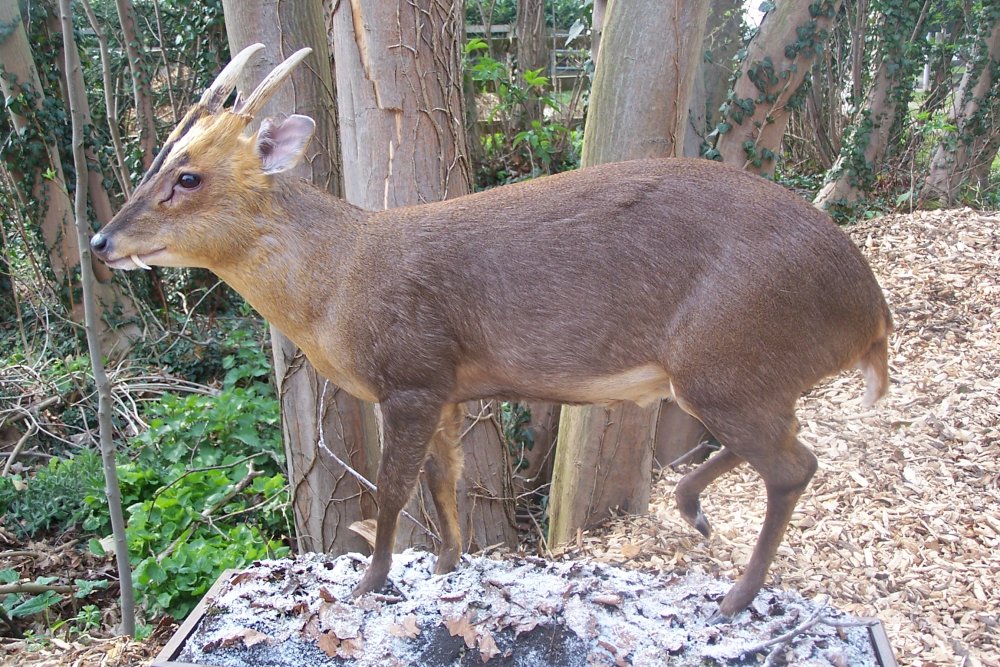|
noah's ark (CleverHunk)
strange or rare life on earthTerug naar het album
Muntjac
small deer of the genus Muntiacus.Muntjacs are the oldest known deer,appearing 15–35 million years ago, with remains found in Miocene
deposits in France,Germanyand Poland.The present-day species are native to South Asia and can be found in Sri Lanka, Southern China,Taiwan, Japan(Boso Peninsula and Oshima Island),India and Indonesian islands. They are also found in the lower Himalayas and in Burma.Inhabiting tropical regions, the deer have no seasonal rut and mating can take place at any time of year; this behaviour is retained by populations introduced to temperate countries.
Reeves's muntjac has been introduced to England, with wild deer descended from escapees from the Woburn Abbey estate around 1925.[3] Muntjacs
have expanded very rapidly, and are now present in most English counties south of the M62 motorway and have also expanded their range into
Wales.Males have short antlers, which can regrow, but they tend to fight for territory with their "tusks"(downward-pointing canine teeth).
Muntjacs are of great interest in evolutionary studies because of their dramatic chromosome variations and the recent discovery of several
new species.The Indian muntjac(Muntiacus muntjak) is the mammal with the lowest recorded chromosome number: The male has a diploid number
of 7, the female only 6 chromosomes. Reeves's muntjac(Muntiacus reevesi),in comparison,has a diploid number of 46 chromosomes.
<< < 1 2 3 > >> |
Datum en tijd
Aanwezige vrienden
Favoriete Forums
Genootschappen
Tip van de dag
|
|
Copyright © 2002 - 2024 Filip Rachunek, alle rechten voorbehouden. Terug naar boven |










































